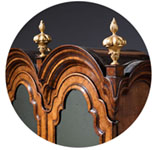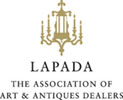17th Century William and Mary Kingwood Strongbox, with Gilt Brass
SOLD
Request Information
Follow Us
17th Century William and Mary Kingwood Strongbox, with Gilt Brass
A 17th century William and Mary Kingwood strongbox, with gilt brass straps. This strongbox has to be one of the most charming and certainly the smallest example we have encountered, at just 17.5 cm high, 28 cm wide and 18 cm deep. A strongbox of similar merit form and style resides at Burghley House in ‘The 1st George State Room.
The box appears decorative, but it was also very difficult to break open or steal. It has a strong lock to the centre and two bolts concealed in the sides, so that it could be screwed down into floorboards if necessary or that of a horse-drawn carriage. Strong-boxes veneered in oysters of Princewood such as this were luxury objects.
The Cabinet-makers who would have constructed and veneered the carcase apparently sold them, often using tropical hardwood veneers, and mounted it with sets of mounts, handles and locks bought in from brass founders. The elaborate veneering and conspicuous gilded brass mounts show that the appearance of these objects was important.
Thomas Pistor, of Ludgate Hill, London worked with the renowned cabinetmaker Gerrit Jensen. Gerrit Jensen supplied a walnut-veneered ‘strongbox’ to Colonel James Grahame in 1668, Levens Hall. It is recorded that Thomas Pistor’s remaining stock was sold off post his death in 1711, included ‘three fine Prices wood strongboxes’.
Condition
Fabulous original condition with a wonderful patina.
Provenance
Literature
Dimensions
PREVIOUSLY SOLD
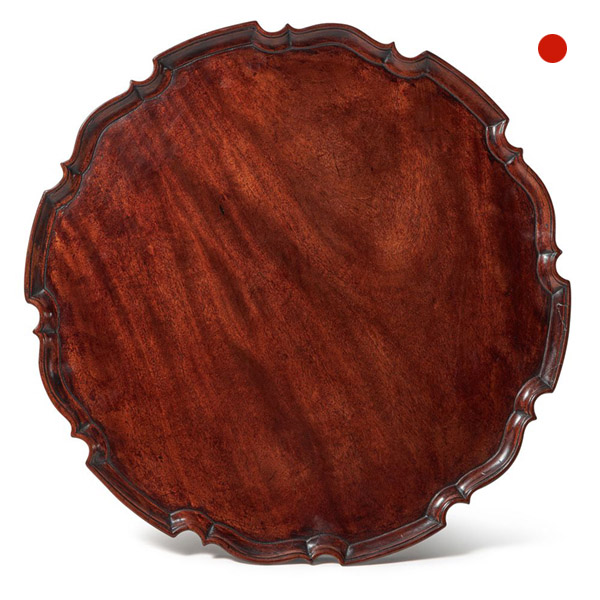
George III Chippendale Period Mahogany Pie Crust Tray
A fine George III Chippendale period mahogany pie crust tray, circa 1770, England. Of circular form, with a carved and shaped edge. Alexander George Fine Antique sell 18th & 19th century antique English furniture.
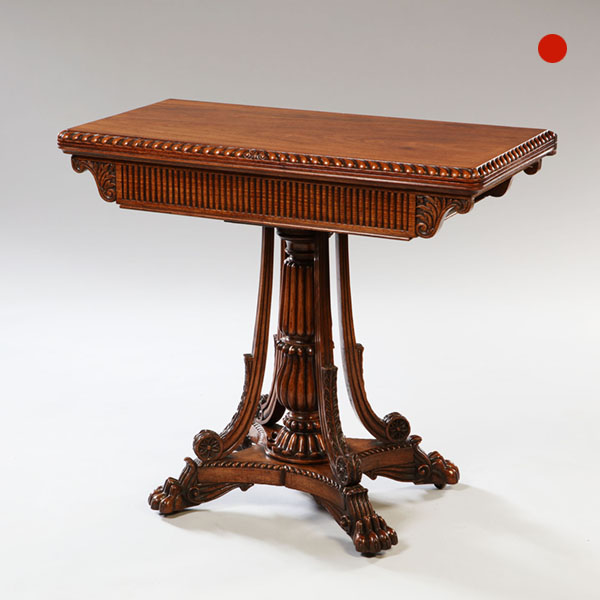
Solid Padauk Carved Anglo-Indian Card Table
Solid Padauk Carved Anglo-Indian Card Table. With the growth of trade and military power, the East India Company encouraged its British male employees to create a community with mixed ancestry. The company paid 15 silver rupees to the mother of any child born of such marriages.
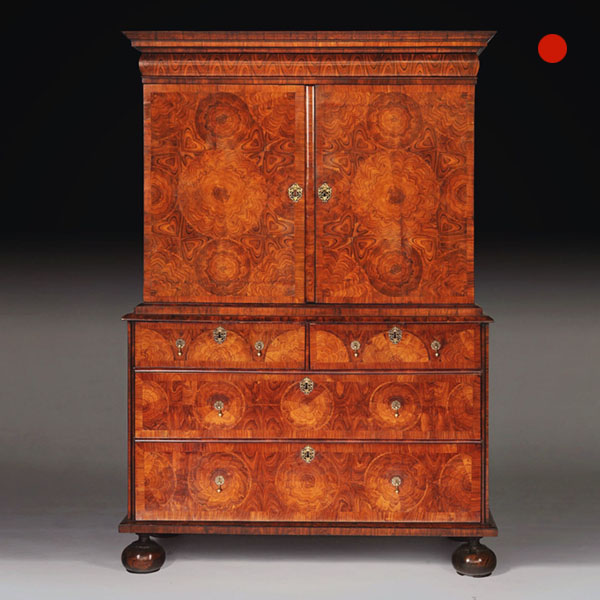
William and Mary Kingwood or ‘Princes’ wood oyster cabinet on chest
When the most expensive timber of the 17th century met Thomas Pistor. There were, in fact, two cabinet-makers called Thomas Pistor, father and son, working for a period at the same time but at different premises. One or both are known to have made furniture of quality for Levens Hall.
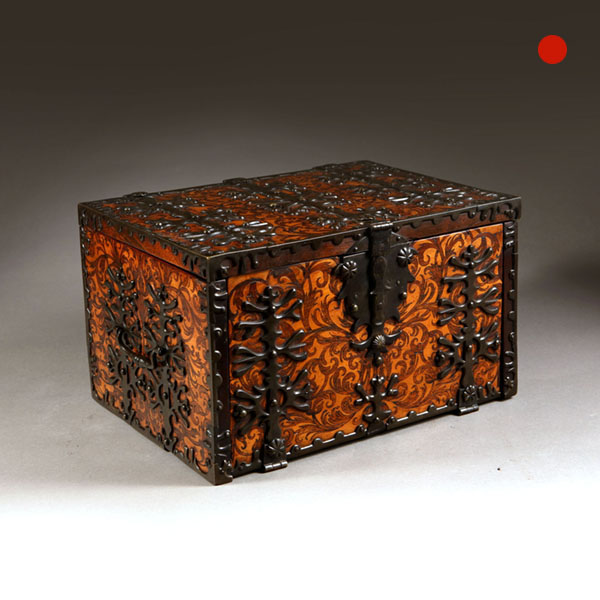
William and Mary Seaweed Marquetry Strong Box Firmly Attributed to Gerrit Jensen
A 17th century William and Mary seaweed or arabesque marquetry strong box, with firm attribution to the royal cabinetmaker, Gerrit Jensen, circa 1680-1700, England.
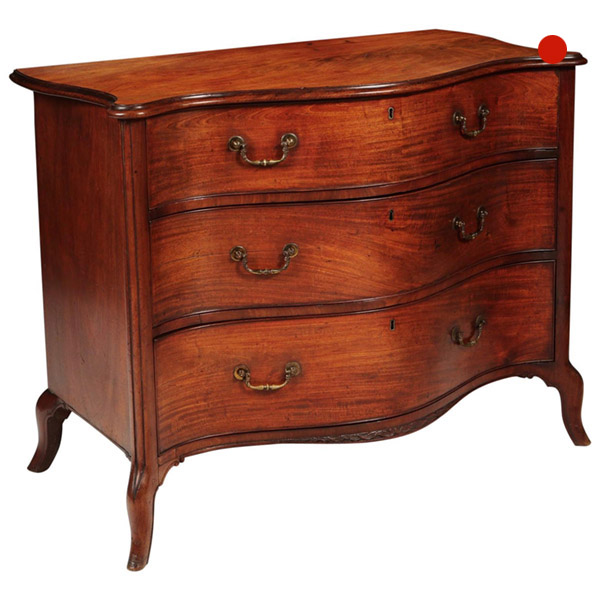
18th Century George III Mahogany Serpentine Chest or Commode
A fine George III mahogany serpentine commode, England, circa 1770. Attributed to Henry Hill, Marlborough. The three graduated drawers retain their original gilt brass handles over a unique carved apron and flanked by moulded angles continuing into the shaped cabriole feet.
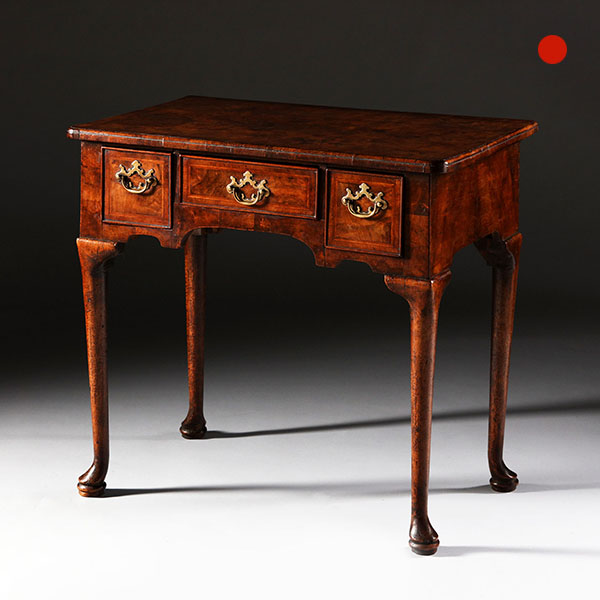
George I Burr and Highly Figured Walnut Lowboy, Circa 1720
George I Burr and Highly Figured Walnut Lowboy Circa 1720. England SOLD Follow UsGeorge I Burr and Highly Figured Walnut Lowboy, Circa 1720. England The feather and cross banded top is quarter veneered with burr walnut and edged with a...

George III Chippendale Period Mahogany Pie Crust Tray
A fine George III Chippendale period mahogany pie crust tray, circa 1770, England. Of circular form, with a carved and shaped edge. Alexander George Fine Antique sell 18th & 19th century antique English furniture.

Solid Padauk Carved Anglo-Indian Card Table
Solid Padauk Carved Anglo-Indian Card Table. With the growth of trade and military power, the East India Company encouraged its British male employees to create a community with mixed ancestry. The company paid 15 silver rupees to the mother of any child born of such marriages.

William and Mary Kingwood or ‘Princes’ wood oyster cabinet on chest
When the most expensive timber of the 17th century met Thomas Pistor. There were, in fact, two cabinet-makers called Thomas Pistor, father and son, working for a period at the same time but at different premises. One or both are known to have made furniture of quality for Levens Hall.

William and Mary Seaweed Marquetry Strong Box Firmly Attributed to Gerrit Jensen
A 17th century William and Mary seaweed or arabesque marquetry strong box, with firm attribution to the royal cabinetmaker, Gerrit Jensen, circa 1680-1700, England.

18th Century George III Mahogany Serpentine Chest or Commode
A fine George III mahogany serpentine commode, England, circa 1770. Attributed to Henry Hill, Marlborough. The three graduated drawers retain their original gilt brass handles over a unique carved apron and flanked by moulded angles continuing into the shaped cabriole feet.

George I Burr and Highly Figured Walnut Lowboy, Circa 1720
George I Burr and Highly Figured Walnut Lowboy Circa 1720. England SOLD Follow UsGeorge I Burr and Highly Figured Walnut Lowboy, Circa 1720. England The feather and cross banded top is quarter veneered with burr walnut and edged with a...
YOU MAY ALSO LIKE
No Results Found
The page you requested could not be found. Try refining your search, or use the navigation above to locate the post.
No Results Found
The page you requested could not be found. Try refining your search, or use the navigation above to locate the post.
